|
Remote Antiquity and Slave Society (1.7 million years ago-476 BC)
China, one of the world's most ancient civilizations, has a recorded history of nearly 4,000 years. "Yuanmou Man," a fossil anthropoid unearthed in Yuanmou in Yunnan Province, who lived about 1.7 million years ago, is China's earliest primitive human discovered to date. "Peking Man," who lived in the Zhoukoudian area near Beijing 600,000 years ago, was able to walk upright, make and use simple tools, and knew how to make fire. The Neolithic Age started in China about 10,000 years ago, and relics from this period can be found all over the country. Cultivated rice and millet as well as farming tools have been found in the remains of Hemudu in Yuyao, Zhejiang Province, and Banpo, near Xi'an City, Shaanxi Province, respectively. These relics date back some 6,000-7,000 years.
The most ancient dynasty, the Xia Dynasty started in 2070 BC The center of Xia was the western part of modern Henan Province and the southern part of modern Shanxi Province, with a sphere of influence that reached the northern and southern areas of the Yellow River. It was in this period that slave society appeared and the next two dynasties, Shang (1600-1046 BC) and Western Zhou (1046-771 BC), saw it develop further. This era was followed by the Spring and Autumn (770-476 BC) and Warring States (475-221 BC) periods, characterized by the decline in power of the ruling house and power struggles between regional powers, marking the transition from slave to feudal society.
Chinese mastered the technology of smelting bronze approximately 5,000 years ago and iron tools came into use during the Shang Dynasty, 3,000 years ago. White and color-glazed ceramics were produced. Silk production was considerably developed and the world's first jacquard silk weaving technology appeared. During the Spring and Autumn Period steel production technologies came on the scene. During the Spring and Autumn and the Warring States periods, there was a great upsurge of intellectual activity, producing many famous philosophers, such as Lao Zi, Confucius, Mencius and Mo Zi, and the well-known military scientist Sun Wu, author of the Art of War.
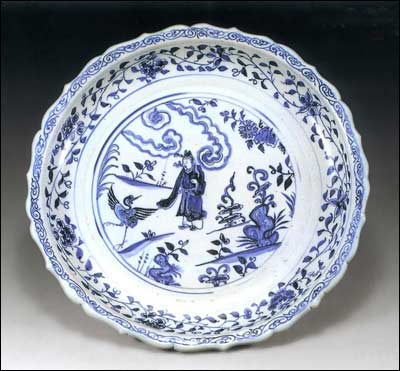
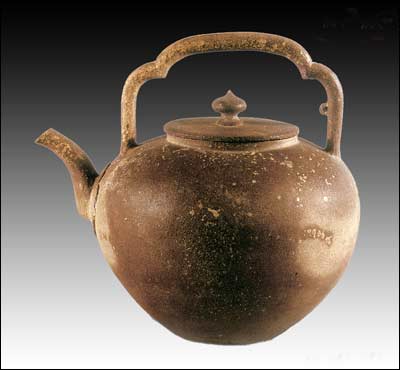
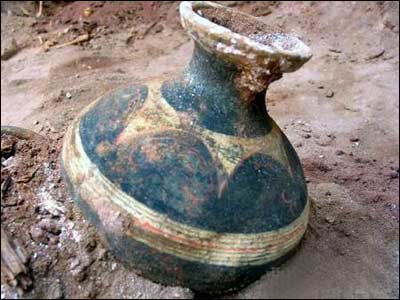
Qin Shi Huang (259-210 BC) and His Empire
In 221 BC, Ying Zheng, first emperor of the Qin Dynasty, put an end to the 250-odd years of rivalry among the independent principalities during the Warring States Period, and established the first centralized, unified, multi-ethnic feudal state in Chinese history - the Qin Dynasty (221-207 BC). He was called Qin Shi Huang or "First Emperor of Qin." He standardized the written script, weights and measures, and currency, and established the system of prefectures and counties. The sovereigns of the next 2,000-odd years followed the feudal governmental structure established by him. He mobilized more than 300,000 people over a period of a dozen years to build the Great Wall, which stretches for 5,000 km across northern China. Qin Shi Huang had the work on his enormous mausoleum started early in his reign. The terracotta warriors and horses of the "underground army" guarding the mausoleum, unearthed in 1974, amazed the world. The 8,000 vivid, life-sized pottery figures, horses and chariots have been called the "Eighth Wonder of the World."
Han Dynasty (206 BC-AD 220) and the "Silk Road"
Liu Bang established the powerful Han Dynasty in 206 BC. During the Han Dynasty, agriculture, handicrafts and commerce flourished, and the population reached 50 million. During his reign (140-87 BC), the most prosperous period of the Han Dynasty, Liu Che, Emperor Wudi, expanded the territory of the empire from the Central Plains to the Western Regions (present-day Xinjiang and Central Asia). He twice dispatched Zhang Qian as his envoy to the Western Regions, and in the process pioneered the route known as the "Silk Road" from Chang'an (today's Xi'an, Shaanxi Province), through Xinjiang and Central Asia, and on to the eastern shores of the Mediterranean. China's gorgeous silk goods were traded to the West along the Silk Road. As contacts between East and West increased, Buddhism spread to China in the first century AD. In 105, an official named Cai Lun, synthesizing the experience of those before him, discovered a technique for making fine paper, an invention that led to a revolution in communications and learning.
Tang Dynasty (618-907)
After the Han Dynasty came the Three Kingdoms Period (220-265), the Jin Dynasty (265-420), the Southern and Northern Dynasties (420-589) and the Sui Dynasty (581-618). These were followed by the Tang Dynasty, established in 618 by Li Yuan. His son, Li Shimin, or Emperor Taizong (r. 626-649), adopted a series of liberal policies, pushing the prosperity of China's feudal society to its peak: agriculture, handicrafts and commerce flourished; technologies for textile manufacturing and dyeing, pottery and porcelain production, smelting and shipbuilding were further developed; and land and water transportation greatly improved. By the 660s, China's influence had firmly taken root in the Tarim and Junggar basins and the Ili River valley, even extending to many city-states in Central Asia. During this period, extensive economic and cultural relations were established with many countries, including Japan, Korea, India, Persia and Arabia.
Song, Yuan, Ming and Qing Dynasties (960-1911)
Following the Tang Dynasty came a period of almost continual warfare known as the Five Dynasties and Ten States. In 960, Zhao Kuangyin, a general of the State of Later Zhou, established the Song Dynasty (960-1279), historically known as the Northern Song Dynasty. When the Song Dynasty moved its capital to the south, historically called the Southern Song Dynasty, it brought advanced economy and culture to the south, giving a great impetus to economic development there. China in the Song Dynasty was a world leader in astronomy, science and technology and printing technology. Bi Sheng invented movable type printing, a major revolution in the history of printing.
In 1206, Genghis Khan established the Mongolian Khanate. In 1271, Kublai, a grandson of Genghis Khan, conquered the Central Plains, founded the Yuan Dynasty (1271-1368), and made Dadu (today's Beijing) the capital. Kublai ended the centuries-long situation in which many independent regimes existed alongside each other, by forming one united state that brought Xinjiang, Tibet and Yunnan under its sway. During the Song-Yuan period, the "four great inventions" in science and technology of the Chinese people in ancient times -- papermaking, printing, the compass and gunpowder -- were further developed and introduced to foreign countries, making great contributions to world civilization.
In 1368, Zhu Yuanzhang established the Ming Dynasty (1368-1644) in Nanjing, reigning as Emperor Taizu. When his son and successor Zhu Di (r. 1360-1424) ascended the throne, he built and expanded the palaces, temples, city walls and moats in Beijing on a large scale. In 1421, he officially moved the capital to Beijing. During his reign, he dispatched a eunuch named Zheng He to lead a fleet of many ships to make seven far-ranging voyages. Passing the Southeast Asian countries, the Indian Ocean, Persian Gulf and Maldives Islands, Zheng He explored as far as Somalia and Kenya on the eastern coast of Africa. These were the largest-scale and longest voyages in the world before the age of Columbus.
The Manchus of northeast China established the Qing Dynasty (1644-1911) in 1644. The best known of the Qing Dynasty emperors, Kangxi (r. 1661-1722) restored the central empire's rule over Taiwan, and resisted invasions by tsarist Russia. To reinforce the administration of Tibet, he also formulated the rules and regulations on the confirmation of the Tibetan local leaders by the Central Government. He effectively administered more than 11 million sq km of Chinese territory.
Modern Period (1840-1919)
During the early 19th century, the Qing Dynasty declined rapidly. Britain smuggled large quantities of opium into China, making the Qing government impose a ban on the drug. In an effort to protect its opium trade, Britain launched a war of aggression against China in 1840, which led to the Qing government's signing with the British government the Treaty of Nanjing, a treaty of national betrayal and humiliation. Many countries, including Britain, the United States, France, Russia and Japan, forced the Qing government to sign various unequal treaties following the Opium War. China was gradually relegated to a semi-colonial, semi-feudal country.
The Revolution of 1911 led by Dr. Sun Yat-sen was one of the greatest events in modern Chinese history, as it overthrew the Qing Dynasty that had ruled for some 270 years, ended over 2,000 years of feudal monarchy, and established the Republic of China.
New-Democratic Revolution (1919-1949)
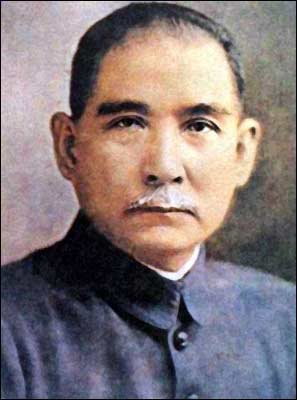
The May 4th Movement of 1919 is regarded as the ideological origin of many important events in modern Chinese history. Its direct cause was the unequal treaties imposed on China after the First World War. Motivated by strong patriotism, students initiated the movement, and it further developed into a national protest movement involving people from all walks of life. It also marked the introduction into China of various new ideologies, among which the spread of Marxism-Leninism is worthy of special mention. Under the influence of Russia's October Revolution of 1917, 12 delegates, including Mao Zedong, representing communist groups in different places throughout the nation, held the First National Congress in Shanghai in 1921 to found the Communist Party of China (CPC).
The Chinese people led by the CPC underwent successively the Northern Expeditionary War (1924-27), the War of Agrarian Revolution (also known as "Ten-Year Civil War," 1927-37), the War of Resistance Against Japan (1937-45), and the War of Liberation (1945-49). Owing to the cooperation and joint resistance of the CPC and Kuomintang, the Japanese aggressors were defeated but shortly after the anti-Japanese war, the Kuomintang re-launched civil war. After the three-year War of Liberation led by the CPC, the Kuomintang government was finally overthrown in 1949.
The People's Republic of China (1949- )
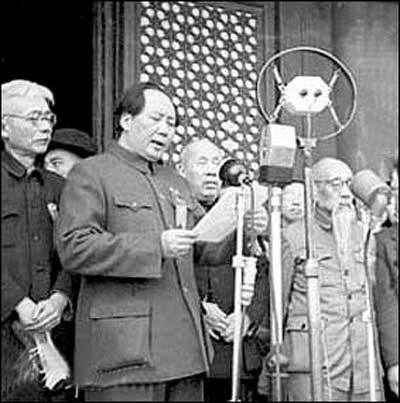
On October 1, 1949, in a grand ceremony witnessed by crowds of Beijing people in Tiananmen Square, Mao Zedong, chairman of the Central People's Government, solemnly proclaimed the founding of the People's Republic of China (PRC).
During the initial post-Liberation period, the Chinese government successfully carried out land reform in areas accounting for over 90 percent of the total national agricultural population, and 300 million peasants were granted approximately 47 million ha of land. Amazing achievements were made during the First Five-Year Plan period, from 1953 to 1957. The average annual increase in national income surpassed 8.9 percent. China established basic industries necessary for full industrialization hitherto non-existent domestically, producing airplanes, automobiles, heavy machinery, precision machinery, power-generating equipment, metallurgical and mining equipment, high-grade alloy steels and non-ferrous metals.
The ten years from 1957 to 1966 was the period in which China started large-scale socialist construction. The nation's total industrial fixed assets quadrupled between 1956 and 1966 and the national income increased by 58 percent in constant prices. The output of essential industrial products increased several or even a dozen times. Large-scale agricultural capital construction and technical transformation got underway. Unfortunately, the "Cultural Revolution," which lasted for ten years (May 1966-October 1976), made the state and its people suffer the most serious setbacks and losses since its founding.
The Jiang Qing counter-revolutionary clique was smashed in October 1976, marking the end of the "Cultural Revolution," and the beginning of a new era in Chinese history. The CPC reinstated Deng Xiaoping, former general secretary of the CPC, to all the Party and governmental posts he had been dismissed from during the "Cultural Revolution." In 1979, China instituted a guiding policy of "reform and opening to the outside world" under Deng's leadership, and the focus was shifted to modernization. Major efforts were made to reform economic and political systems. Step-by-step, China was establishing a road with Chinese characteristics, a road that would lead to socialist modernization. Profound changes have come about in China since the country embarked on the policy of reform and opening-up. This period is the best ever since the founding of the People's Republic of China, one characterized by rapid and vigorous economic advance and markedly improved living standards.
Jiang Zemin became general secretary of the CPC Central Committee in 1989 and head of state in 1993. Succeeding him, Hu Jintao took the position of general secretary of the CPC Central Committee in 2002 and president of the state in 2003. Today, the CPC Central Committee, headed by Hu Jintao, continuously upholds the policy of reform and opening-up initiated by Deng Xiaoping. As a result, China's policies enjoy wide popular support in a stable political situation, burgeoning economy, and active diplomatic engagement.
The Dynasty
| Dynasty |
Date |
| Xia |
2070-1600 BC |
| Shang |
1600-1046 BC |
| Western Zhou |
1046-771 BC |
| Eastern Zhou |
|
| Spring and Autumn Period |
770-476 BC |
| Warring States Period |
475-221 BC |
| Qin |
221-206 BC |
| Western Han |
206 BC-AD 25 |
| Eastern Han |
25-220 |
| Three Kingdoms (Wei, Shu and Wu) |
220-280 |
| Western Jin |
265-317 |
| Eastern Jin |
317-420 |
| Southern and Northern Dynasties |
420-589 |
| Sui |
581-618 |
| Tang |
618-907 |
| Five Dynasties |
907-960 |
| Northern Song |
960-1127 |
| Southern Song |
1127-1279 |
| Yuan |
1271-1368 |
| Ming |
1368-1644 |
| Qing |
1644-1911 |
|